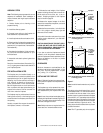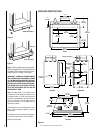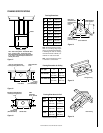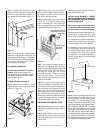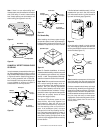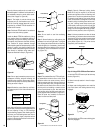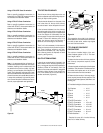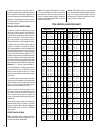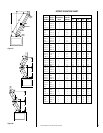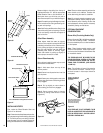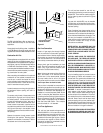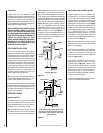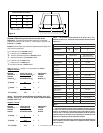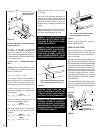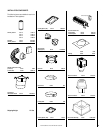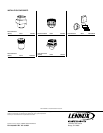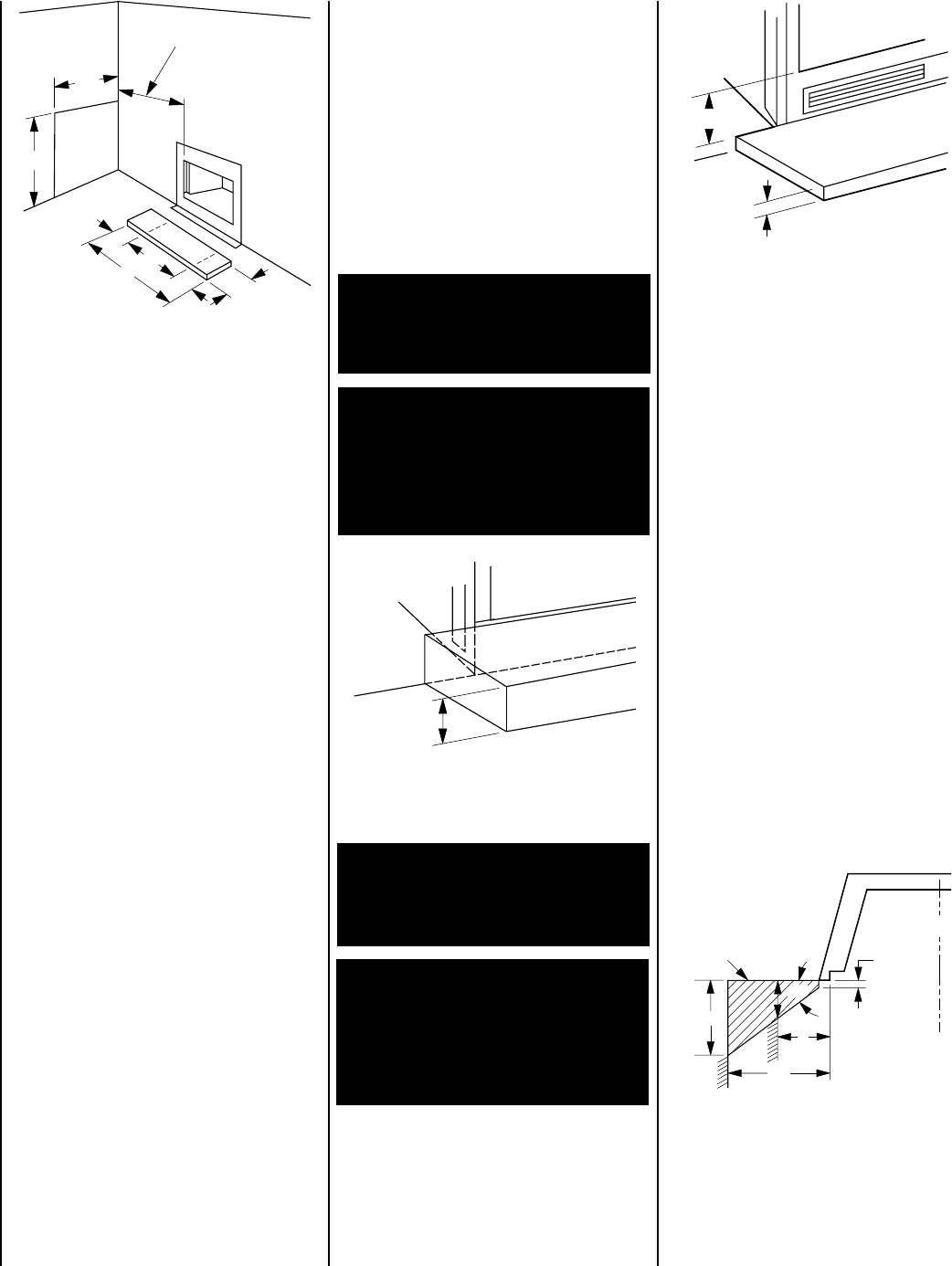
NOTE: DIAGRAMS & ILLUSTRATIONS NOT TO SCALE.
18
Secure the hearth extension to the floor to
prevent possible shifting.
FINISH TO YOUR TASTE
There are a wide variety of “finished looks” for
these fireplaces, from formal wall decor with
elaborate mantels to rustic wood paneling or
warm brick facings.
Only noncombustible materials like stone, tile,
brick, etc., may overlap the black front facing.
Do not extend these materials beyond the black
facing and into the firebox area. Be sure not to
interfere with the installation and operation of
glass doors or block the upper or lower grilles.
Seal all joints between the black facing and wall
surrounds to prevent air intrusion. Use non-
combustible caulking material only to seal the
black metal facing to the surround material on
the finished wall.
Combustible materials may project beyond the
sides of the fireplace opening as long as they
are kept within the shaded areas illustrated in
Figure 52
.
Figure 51
Figure 52
12"
12"
Min. Distance To
Unprotected Side Wall
8"
45°
Combustible
Materials
Allowed In
Shaded Area
“Safe Zone”
8"
1"
Min. Distance To
Protected Side Wall
Fireplace
Figure 50
5 1/2"
2"
Max. Thickness Of Hearth Extension When
Circulating Models Are On The Floor
7"
Max. Thickness Of Hearth Extension When
Non-Circulating Models Are On The Floor
Wall Shield Required
Where Less Than 12"
A
B
C
C
30"
24"
D
Figure 49
WARNING: THE CRACK BETWEEN THE
FIREPLACE AND THE HEARTH EXTEN-
SION MUST BE SEALED WITH A NON-
COMBUSTIBLE MATERIAL.
Calculating Minimum Thickness if Multiple
Materials are Used
At times it is important to know what
combination of materials are acceptable for
use as floor protection. The “R values” are
used to determine acceptable combinations of
materials because “R values” are additive where
r and k values are not.
“R value” = 1/k = “r” x thickness of material
used
Example:
Given that the required “R value”
for a suitable floor protector used must be
equal to or greater than:
“R” = r
L
x T
L
= 0.78 x 1” = 0.78.”
If it is desired to elevate a marble hearth ex-
tension to a level of 5” or more above the floor
surface. What combination of noncombus-
tible materials can be used to accomplish this?
If common brick is used so that the 3 1/2”
dimension is the height, “R” for the common
brick becomes:
brick
“R”
M
= r
M
x T
S
= 0.20 x 3 1/2" = .70
Using 1/2” of mortar to set the brick, “R” for
the mortar is calculated as follows:
mortar
“R”
M
= r
M
x T
S
= 0.20 x 1/2" = .10
Next, a 3/4" marble slab set in 1/2" mortar cov-
ers the brick, “R” for the marble and mortar
becomes:
marble
“R”
M
= r
M
x T
S
= 0.05 x 3/4" = .038
mortar
“R”
M
= r
M
x T
S
= 0.20 x 1/2" = .10
The sum of all “R values” is: .70 + .10 +. 038
+ .10 = .938
This would be an acceptable combination of
material for the hearth extension since the
total calculated “R value” of the materials used
exceeds the required “R value” of 0.78. An
additional layer of insulating materials is not
needed.
Note:
Also see NFI Certification Manuals for
expanded explanation on calculating “R val-
ues” when multiple materials are used.
WARNING: WHEN INSTALLING HEARTH
EXTENSION IN FRONT OF A NON-CIRCU-
LATING FIREPLACE MODEL, THE FIRE-
PLACE MUST BE RAISED IF HEIGHT OF
HEARTH EXTENSION EXCEEDS 7" ABOVE
THE BOTTOM OF FIREPLACE (
FIGURE 50
).
WARNING: WHEN INSTALLING THE
HEARTH EXTENSION BE CAREFUL NOT
TO BLOCK THE HEAT-CIRCULATING AIR
INLET GRILL ON CIRCULATING MODELS.
WARNING: WHEN INSTALLING HEARTH
EXTENSION IN FRONT OF A CIRCULAT-
ING FIREPLACE MODEL, THE FIREPLACE
MUST BE RAISED IF HEIGHT OF HEARTH
EXTENSION EXCEEDS 2" ABOVE BOTTOM
OF FIREPLACE (
FIGURE 51
).



